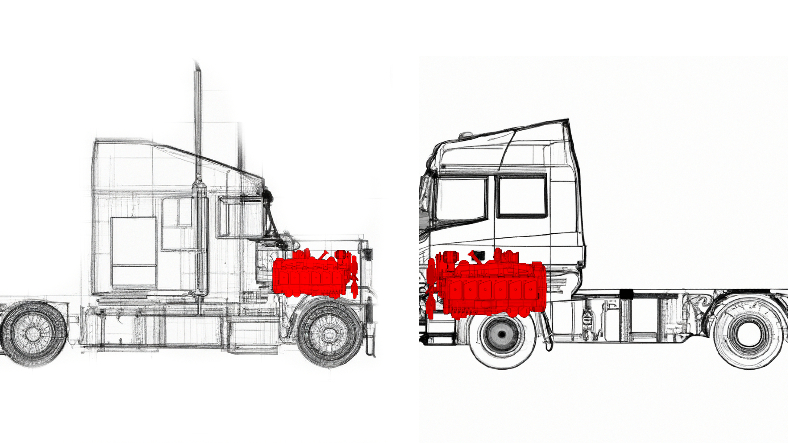Design Differences and Reasons
ADVERTISEMENT
**Long-Nosed Trucks in America and Short-Nosed Ones in Europe: Design Differences and Reasons**
Road transportation is a prevalent and vital sector worldwide. However, the designs and features of trucks used in different geographical regions can vary significantly. Particularly, the differences between long-nosed trucks used in the United States and short-nosed trucks common in Europe are notable and stem from various factors.
**1. Impact of Legal Regulations**
When examining the laws regulating truck usage in America and Europe, different length standards emerge. In the United States, with the revision of the Motor Carrier Act in the early 1980s, restrictions on truck lengths were largely lifted. This change provided truck manufacturers with flexibility to produce trucks of varying lengths. In contrast, truck lengths in Europe are still subject to a maximum limit, which influences truck design significantly. In Europe, shorter-nosed trucks are preferred to maximize the amount of cargo transported, whereas in America, long-nosed trucks are more common.
**2. Engine Sizes and Placement**
Engine sizes and placement also play a significant role in truck design. Typically, large and powerful engines are used in American trucks. These large engines provide more flexibility in the design of long-nosed trucks. Conversely, trucks used in Europe generally feature smaller and more efficient engines. Therefore, a more compact design is preferred, with the engine usually positioned under the driver's cabin.
**3. Geographic Differences and Road Conditions**
Geographical disparities between America and Europe influence truck design significantly. In America, wide and straight highways are prevalent, providing a suitable environment for long-nosed trucks. However, in Europe, narrow streets, tight turns, and limited maneuvering space are more common. Therefore, shorter-nosed trucks with enhanced maneuverability are preferred in Europe.
**4. Intended Use and Driver Behavior**
Truck design is closely related to the intended use and driver behavior. In America, truck drivers often spend long periods in their trucks, whereas in Europe, drivers take more frequent breaks and operate over shorter distances. Consequently, trucks in America tend to feature wider and more comfortable designs, while in Europe, more compact and functional designs are favored.
**Conclusion**
The differences between long-nosed trucks in America and short-nosed trucks in Europe result from a combination of factors. Legal regulations, geographical factors, intended use, and driver behavior all contribute to determining truck design and preferred features. Each type of truck is optimized to meet the specific needs and conditions of its respective region, leading to variations in design.
ADVERTISEMENT
-

Design Differences and Reasons
-

Truck and Trailer Horns Working with a Pull Cord on Top
-

Why are Kangaroo Trucks Known for Having a Low Front and a High Back?
-

Why are the front wheels of tractors smaller than the rear wheels?
-

What Do These Air-Suspended Wheels Found on Trucks and Trucks Actually Do?
-

Why Are There So Many Gears in Heavy Vehicles Like Trucks and Lorries?















